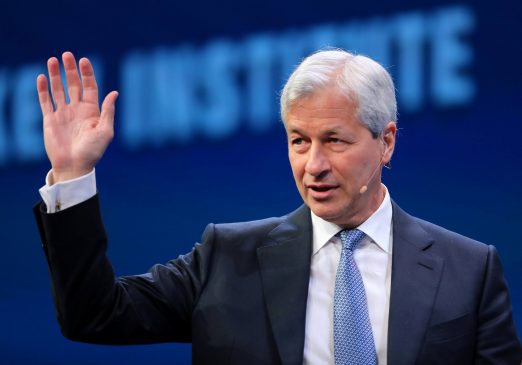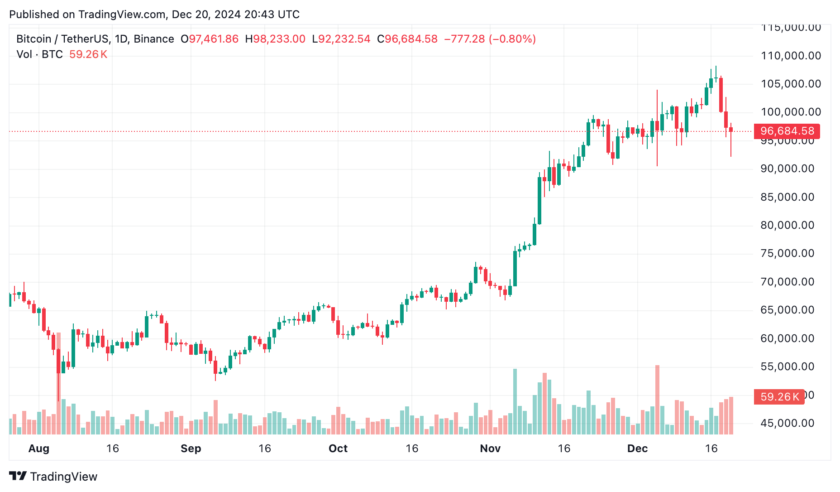JPMorgan’s controversial blockchain token might not be a real cryptocurrency, but researchers say it could help spark concrete crypto adoption.
Binance Argues JPMorgan’s Dubious Crypto Project Will Spur Real Adoption
In a new article from Binance Research, one of the world’s largest cryptocurrency exchanges deems JPM Coin a “stepping stone” toward mass adoption. By exposing large clients to a private blockchain structure, JPMorgan will indirectly increase interest in the wider crypto industry.
“The rise of this third generation of stablecoins may only be an intermediate stepping stone for cryptocurrency mass adoption. Stablecoins running on private blockchains will contribute to increasing awareness of the rest of the blockchain and cryptoasset industry in the long run.”
The question they set out to answer, whether or not JPM Coin can disrupt the stablecoin market, comes back as “very unlikely.”
“It is very unlikely that JPM Coin will disrupt the existing stablecoin industry in the near term owing to its permissioned, private nature. Currently, stablecoins issued by banks are designated to serve a specific purpose and as a result, do not directly compete with the existing stablecoins.”
Will JPM Coin Be Made Available to Regular Chase Users?
JPMorgan isn’t likely to make its crypto token available to consumers – at least not yet. | Source: Shutterstock
The query follows Jamie Dimon’s flirting with the idea that JPM Coin might become a household item, as opposed to an esoteric product used by a small percentage of institutional clients for cross-border transactions. Dimon said of this possibility:
“JPMorgan Coin could be internal, could be commercial, it could one day be consumer.”
However, as CCN’s Josiah Wilmoth noted, the JPM Coin website specifically states they have no existing intention to issue it to the public. The token is currently unavailable to everyday consumers.
JPM Coin reminds one of “E Coin” from USA’s “Mr. Robot” series. The “cryptocurrency” was used as a means to settle transactions within the bank’s massive holdings.
Binance also concludes in agreement with Ripple Labs CEO Brad Garlinghouse: Ripple and JPM Coin are not currently in a competitive state:
“Overall, the two projects appear to have different focuses and potential applications in the short term. While there is currently no direct overlap on the functionality of the two initiatives, future developments on the reach of JPM Coin outside of its existing closed network will determine to what degree Ripple and JPM Coin will compete.”
Garlinghouse said of JPM Coin:
As predicted, banks are changing their tune on crypto. But this JPM project misses the point – introducing a closed network today is like launching AOL after Netscape’s IPO. 2 years later, and bank coins still aren’t the answer https://t.co/39EAiSJwAz https://t.co/e7t7iz7h21
— Brad Garlinghouse (@bgarlinghouse) February 14, 2019
JPM Coin: Largest Stablecoin?
If we categorize JPM Coin as a stablecoin, it takes very little effort for it to be the largest. As Binance writes:
“Based on J.P. Morgan’s position as one of the world’s largest banks, even a small portion of total assets locked as fiat collateral for JPM Coin could make the institution the largest stablecoin issuer on a blockchain measured by circulating supply and total market cap.”
JPMorgan moves up to $6 trillion in assets daily. The total market capitalization for all stablecoins is well under $3 billion. If JPM Coin represents just 1% of JPMorgan’s daily average, it more than doubles the market.
But it’s not a stablecoin in the same respect that Tether or TrueUSD are. It’s not available to traders all over the world, nor even people outside of JPMorgan’s top client list. It’s not something you can take and redeem for Bitcoin. It, therefore, has no actual net effect on the stablecoin market. The purpose that existing stablecoins serve is not affected by the issuance of JPM Coin.




